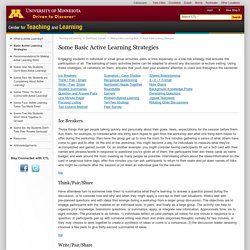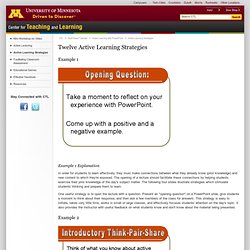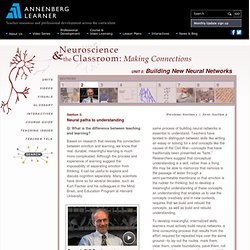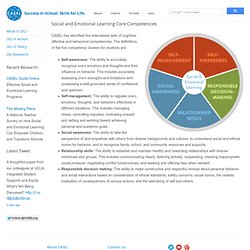

Active Learning Theory. Educators Guide to the use of Pinterest in Education. Some educational Pinners to follow This is the editor of the famous blog cool cat teacher.

It has over 69 boards all with more than 600 pins. Some of her best boards include "Teaching Ideas and App", Collaborative Writing", and " Global Collaboration in Education ". This guy is one of our favourite educational writers. He has several boards covering different topics such as: Google chrome extensions, Twitter apps and resources, web2.0 tools for educators and his own personal learning network. Karen is a great educator with a huge presence online. This is an ICT specialist. Shannon has a great Pinterest page that includes some awesome boards on educational technology essentials. Shelly has one of the resourceful boards on Pinterest.
Useful Pinterest Tutorials : 1- How to start using Pinterest 2- How to save Time Using Pinterest 3- How to Pin a Quote and Text to Pinterest. Some Basic Active Learning Strategies. Engaging students in individual or small group activities–pairs or trios especially–is a low-risk strategy that ensures the participation of all.

The sampling of basic activities below can be adapted to almost any discussion or lecture setting. Using these strategies, or variations on them, ensures that you'll hold your students' attention in class and throughout the semester. Ice Breakers Those things that get people talking quickly and personally about their goals, fears, expectations for the session before them. Twelve Active Learning Strategies. Example 1 Example 1 Explanation In order for students to learn effectively, they must make connections between what they already know (prior knowledge) and new content to which they're exposed.

The opening of a lecture should facilitate these connections by helping students exercise their prior knowledge of the day's subject matter. The following four slides illustrate strategies which stimulate students' thinking and prepare them to learn. One useful strategy is to open the lecture with a question. Example 2 Example 2 Explanation "Think-Pair-Share" is an active learning strategy that engages students with material on an individual level, in pairs, and finally as a large group. When used at the beginning of a lecture, a Think-Pair-Share strategy can help students organize prior knowledge and brainstorm questions.
Example 3 Example 3 Explanation Focused listing is a strategy in which students recall what they know about a subject by creating a list of terms or ideas related to it. Brain-Based Learning: Resource Roundup. Edutopia's list of resources, articles, videos, and links for exploring the connection between education and neuroscience.

(Updated: 12/2013) Building Brain Literacy in Elementary Students, By Judy Willis, M.D. (2013) Neurologist, teacher, author and Edutopia blogger Willis discusses the benefits of teaching elementary students how their brains work. Brains, Brains, Brains! Unit 5 Text Section 2. Q: What is the difference between teaching and learning?

Based on research that reveals the connection between emotion and learning, we know that real, durable, meaningful learning is much more complicated. Although the process and experience of learning suggest the impossibility of separating emotion from thinking, it can be useful to explore and discuss cognition separately. Many scientists have done so for several decades, such as Kurt Fischer and his colleagues in the Mind, Brain, and Education Program at Harvard University.
Dynamic Skill Development Harvard Professor Kurt Fischer has combined several avenues of research to converge on a model for learning that links stages of development—beginning with actions, then moving to... Enable Javascript to see more information These scientists theorize that learning anything requires that the learner build a new neural network. (End of first column online) same process of building neural networks is essential to understand.
Core Concepts. Brain-based learning, ideas, and materials. SEL Core Competencies. CASEL has identified five interrelated sets of cognitive, affective and behavioral competencies.

The definitions of the five competency clusters for students are: Self-awareness: The ability to accurately recognize one’s emotions and thoughts and their influence on behavior. This includes accurately assessing one’s strengths and limitations and possessing a well-grounded sense of confidence and optimism.Self-management: The ability to regulate one’s emotions, thoughts, and behaviors effectively in different situations.